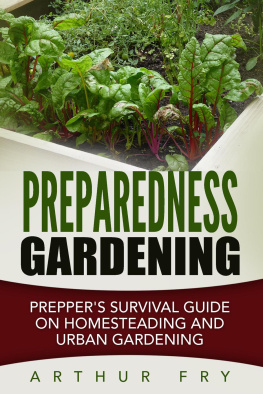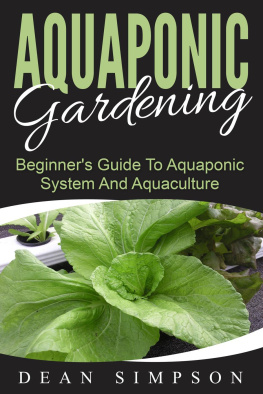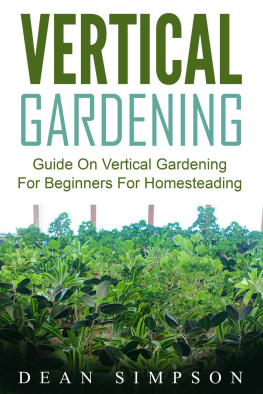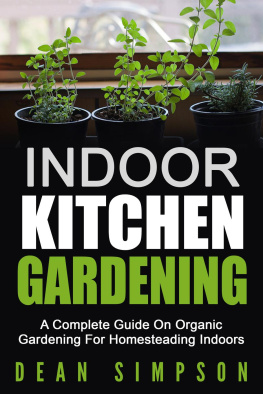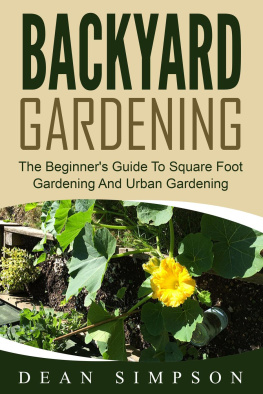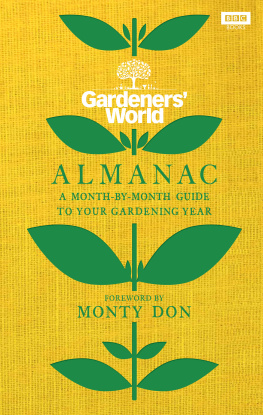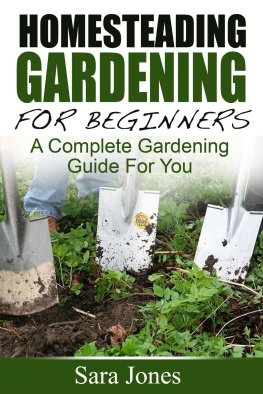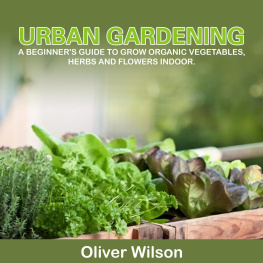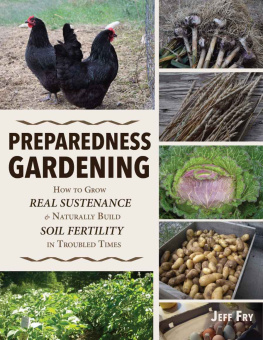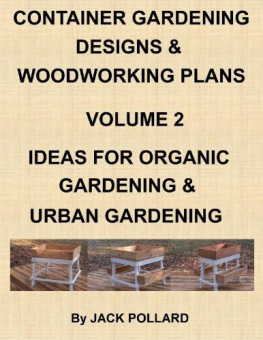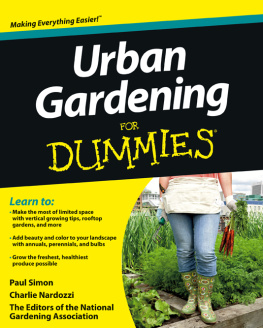Preparedness Gardening for Emergencies
While every precaution has been taken in the preparation of this book, the publisher assumes no responsibility for errors or omissions, or for damages resulting from the use of the information contained herein.
PREPAREDNESS GARDENING: PREPPER'S SURVIVAL GUIDE ON HOMESTEADING AND URBAN GARDENING
First edition. March 23, 2017.
Copyright 2017 Arthur Fry.
Written by Arthur Fry.
10 9 8 7 6 5 4 3 2 1
Introduction
Chapter 1: Important Notes to Take
Indoor vs Outdoor vs Portable Gardens
Flooding and Gardening
Chemicals and Gardening
Radiation and Gardening
Storms and Gardening
Heat and Gardening
Wildfires and Gardening
Landslides and Gardening
Blackouts and Gardening
Chapter 2: Basics of Renewable Planting
Perennials vs Annuals
What Seeds to Avoid
Quickly Scaled Crops
Seed Storage Basics
Chapter 3: Building Long-Term Gardens
Choosing a Location
Preparing Your Soil
Your Essential Tools
Chapter 4: Portable Gardens & Kits
Bug-Out Garden Kit
Portable Greenhouses
Gardens on Wheels
Modular Gardening
Chapter 5: Introduction to Climates & Crops
Perennials & Climate
Temperate (Zones 1-8)
Sub-Tropical (Zones 9-12)
Tropical (Zones 13+)
Annuals & Climate
Warm Season Annuals
Cool Season Annuals
Conclusion
Introduction
A s the interest in prepping for natural disasters and other emergencies continues to grow its following, theres an aspect thats often overlooked: the home garden. Having a renewable source of food is incredibly relevant in even this modern world. What will happen if the emergency isnt over by the time your food runs out? If scavenging fails? Are the seeds you have prepared stored right, and are their crops renewable? Planting for preparedness and scalability is a bit different than just building a garden.
Well be discussing exactly why and when preparedness gardening is important, the basics of seed storage, what to look for when preparing plants, and what you can do to prepare your land for a long-term solution. In later chapters, well explore portable alternatives, as well as take a more specific look at what plants are best for the climate of your region.
The intention of this book is to provide you a brief overview of what to consider when gardening for the purpose of emergency preparedness. You should feel comfortable researching more advanced aspects of the topic by the end.
Chapter 1: Important Notes to Take
G ardens based on renewable, high-producing plants and vegetables allow you to have a renewable food source that relies only on the environment or having the right supplies. Just by starting out with some seeds, fertilized soil, and water, you can ensure your family always has some access to food in the future. But such gardens wont do much for you in the short-term many renewable crops take time to mature, flower, and produce.
This is why simply keeping a supply of seeds in a bug-out bag cant be considered a renewable source of food. There is always the possibility of those seeds not being fertile, or of their plants not producing seeds for next time, or of them not growing as quickly as needed in the environment youre headed to. Its also important to understand when your garden is relevant and how you can protect it against common natural disasters.
Indoor vs Outdoor vs Portable Gardens
B efore we get into specific situations, well be taking a quick look at the prospect of indoor gardening for emergencies. Having an indoor garden has a number of pluses, the first and most obvious one being that it has additional protection from the elements in case of a natural disaster (such as a severe storm) or even contaminated rain. You also have constant access to monitor and tend to the plants. Being indoors will additionally protect it from wild life and keep the eyes of human scavengers off it.
However, these gardens take up living space and generally rely on electricity to provide lighting, which can cause them to quickly go downhill in the case of an emergency. You also lose the natural fertilizers and nutrients that the outdoors comes with. But what if you could easily move these to natural sunlight in the case of a blackout or quickly replant them when their soil has gone west? Thats where building a portable garden comes into play. Having your gardens designed so they can be moved without disrupting the plants can be a huge plus, especially in the case of a long-term emergency, and well go into more depth about that later.
The rest of this chapter will be assuming that your gardens are specifically outdoors. That doesnt mean the tips wont apply to an indoor or portable garden, but its the simplest way to present the topic of how disasters affect gardens in general. Well also be going into more depth about some solutions to these disasters for outdoor gardens in chapter three.
Lets discuss the most obvious emergencies that would pose a problem to your garden first.
Flooding and Gardening
I n the case that your area experiences extreme flooding, a garden at ground-level would most likely become toxic and unsalvageable. However, crops that have already sprouted can be picked before the flooding becomes severe in your area, and pickled vegetables, etc. from the gardens previous harvests can be used as a temporary food source.
Another problem thats posed by flooding is the general contamination of soil and tap water. Even raised and second-story indoor gardens will need water that has been purified to ensure the crops grown dont absorb anything toxic.
Tip : Do you know how the basics of purifying and filtering water? This is an essential part of emergency preparedness at all levels, and there are a large number of ways to do so we highly recommend researching the topic on your own. At the very least, we recommend that untested water during an emergency should be boiled for one to two minutes and then brought to a safe temperature before use.
Chemicals and Gardening
I n the case that there is a chemical emergency, the effects are very similar to a flooding in that your water source is contaminated. However, the main difference is that even your sprouted crops may not be salvageable by the time youve been informed depending on the type of chemical emergency it is. Spills into nearby soil and airborne chemical solutions are especially dangerous, and outdoor plants should not be trusted in similar cases.
Radiation and Gardening
I n the case of a radiation emergency, no outdoor crops should be trusted, nor should outdoor gardens be tended. Stay inside until you hear from the authorities that its safe to do otherwise. Do not attempt to grow food crops near soil that has been contaminated by radiation.
Now, lets take a look at some emergencies that are better suited to preparedness gardens.
Storms and Gardening
P lants are surprisingly resilient, and a strong storm alone usually wont be enough to root up your entire food supply. Most crops (especially those low to the ground) can handle heavy rain and wind without major issues or may be easily protected by tarps or burlap wraps. The danger comes when concentrated wind is involved (such as the case of a tornado), which is much more likely to uproot crops.
A couple important things to look out for during storms are toxic substances being blown into your garden, as well as run-off from polluted areas (especially an issue if you live at the bottom of a hill). Both of these can contaminate your soil and crops to a point that may make them inedible.
Heat and Gardening
Next page
